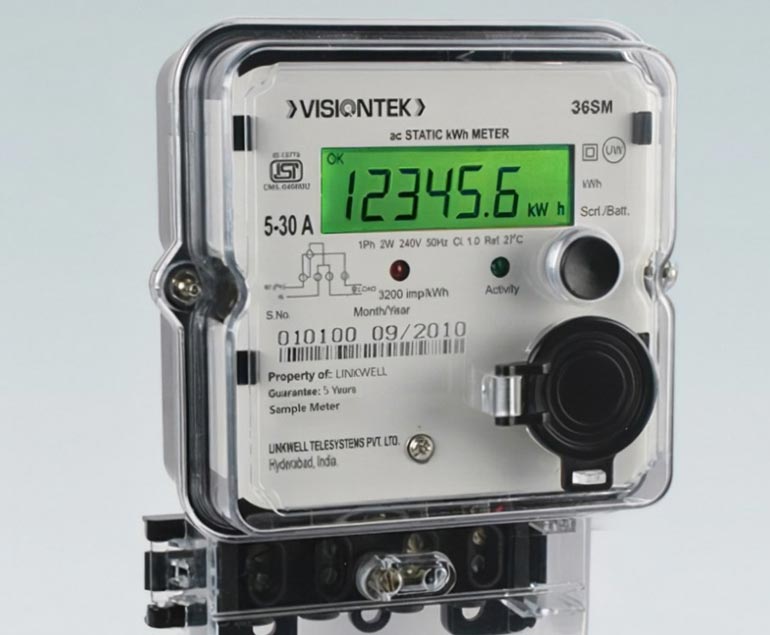Electric Meters
Benefits:
- Allows for faster outage detection and restoration of service.
- Provides customers with greater control over their electricity use when coupled with time-based rates.
- Allows customers to make informed decisions by providing highly detailed information.
- Helps the environment by reducing the need to build power plants, or avoiding the use of older, less efficient power plants as customers lower their electric demand.
- Increases privacy because electricity usage information can be relayed automatically to the utility for billing purposes without on-site visits by a utility.
- Smart Meters are the first step toward creating a Smart Grid.

Presentation
The basic unit of measure of electric power is the watt. One thousand watts are called a kilowatt. If you use one thousand watts of power in one hour you have used a kilowatt-hour (kWh). Your electric utility bills you by the kWh.
The standard electric power meter is a clock-like device driven by the electricity moving through it. As the home draws current from the power lines, a set of small gears inside the meter move. The number of revolutions is recorded by the dials that you can see on the face of the meter. The speed of the revolutions depends on the amount of current drawn -- the more power consumed at any one instant, the faster the gears will rotate.
When reading an electric meter, read and write down the numbers as shown on the dials from right to left. When the pointer is directly on a number, look at the dial to the right. If it has passed zero, use the next higher number. If it has not passed zero, use the lower number. Record the numbers shown by writing down the value of the dial to your extreme right first and the rest as you come to them. Should the hand of a dial fall between two numbers, use the smaller of the two numbers.
